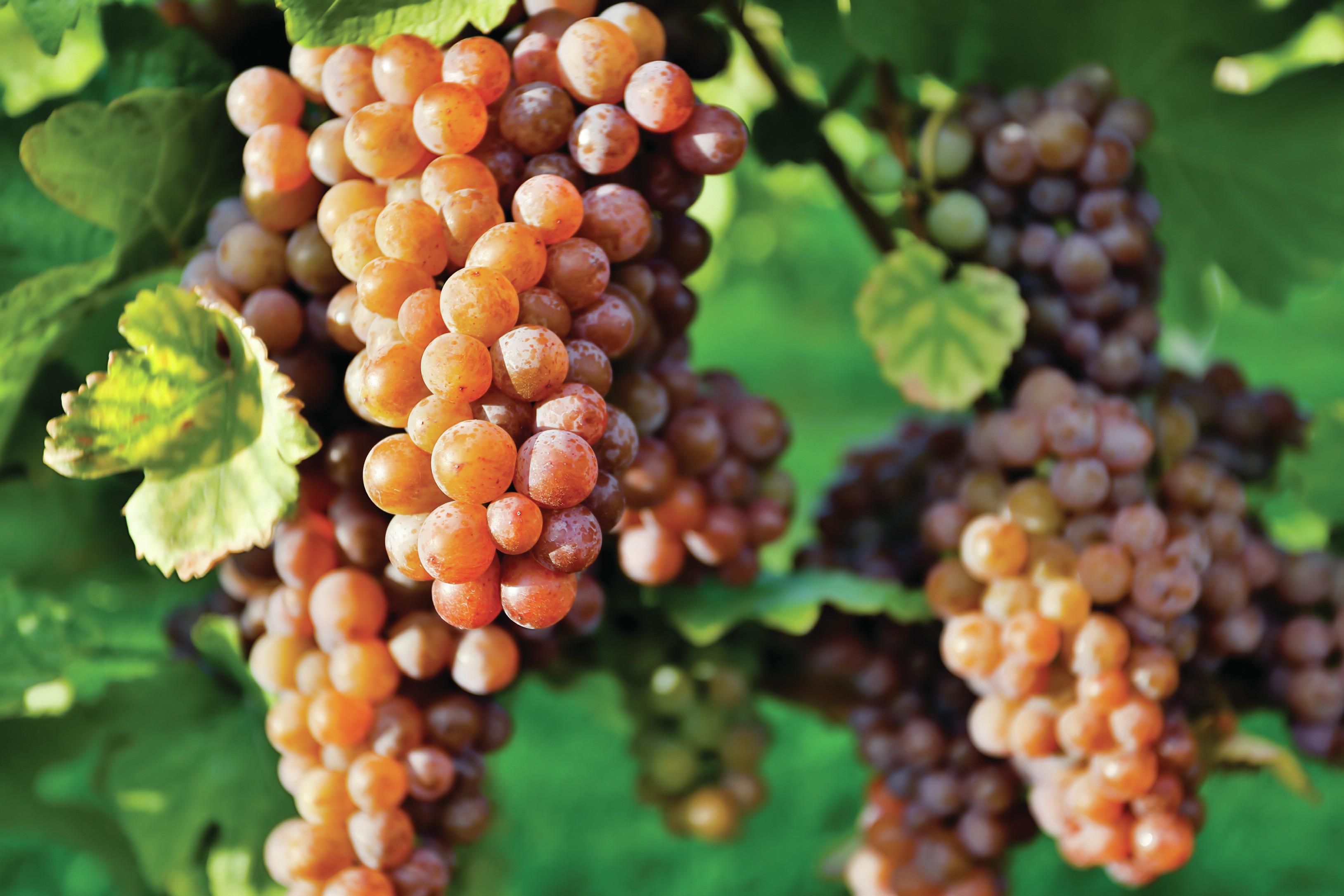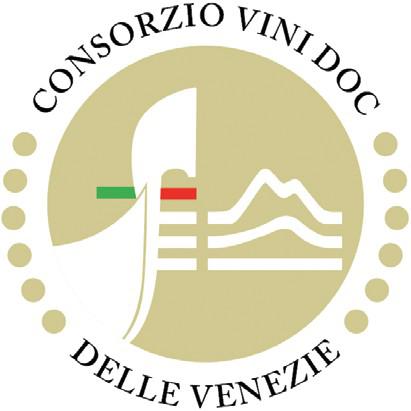Revealing the pink side of Pinot Grigio
The Pinot Grigio delle Venezie DOC is the source of popular, refreshing white wines, but also distinctive and delicious copper-pink ones, called tamari, which were the subject of a masterclass at this year’s London Wine Fair. Patrick Schmitt MW reports.

When choosing which aspect of Pinot Grigio delle Venezie DOC to present to the UK trade at this year ’s London Wine Fair, it became clear that one area would make a suitable focus. During past masterclasses, we had concentrated on this classification’s rise to fame, and its scope, taking in a range of styles, from light and fresh, to sparkling, and richer expressions.
But in 2023, an era when rosé is so fashionable, and a maturing category with an increasingly premium positioning, it was logical to consider ‘the pink side of Pinot Grigio delle Venezie DOC’. After all, not only is Pinot Grigio rosé, rosato, blush, or, to use its regionally-specific term – ramato, something with a long history, it’s also a delicious and distinctive alternative to Provençal pinks – which are becoming pricier as supply constraints begin to set in as global demand intensifies. With that as a background, we used the London Wine Fair to present some fine pink wines made with Pinot Grigio, hoping to raise awareness for rosé produced in the delle Venezie DOC.

As part of that, it seemed necessary to discuss how the wines are made. Key to the colour of pink Pinot Grigio is the grape’s skin. The berries are a greyishpink – and hence the grigio (grey) in the name, unlike the black (noir), of Pinot Noir, or white of Pinot Blanc.
Because of this colour – aresult of a natural mutation in the vineyard – when Pinot Grigio grapes are crushed, if the berry’s skins are allowed to spend time with the juice, they will leach a coppery colour into the wine, and some texture, along with some additional flavours – from orchard fruit to acacia flowers. The amount of time this juice-skin contact lasts can range from 24hrs to two weeks, depending on the desired appearance, taste and mouthfeel of the wine.
Importantly, the historical name of this wine style is, as mentioned above, ramato, which means copper in Italian, and was chosen to refer to the copperpink appearance of this type of Pinot Grigio. Furthermore, most Pinot Grigio was made in a ramato style until the 1960s, with skin-contact the norm in this part of Italy when working with this grape. Widespread change came when Veneto producer Santa Margherita started exporting a clear dry style of Pinot Grigio to the US, making the grape from this part of Italy famous for delicate, refreshing white wines, and encouraging others to follow suit.
So, by embracing Pinot Grigio delle Venezie Ramato DOC, not only is one championing a long-standing style of drink, but also a particular wine that has its roots in this part of Italy, with the historic heartland of ramato being Friuli. Indeed, as pointed out at the masterclass, the Delle Venezie DOC covers three regions known as the Triveneto, which are: Friuli-Venezia Giulia, Trentino and the Veneto. Granted DOC status in 2016, although this was formalised the following year, Pinot Grigio Delle Venezie DOC is a fairly new classification, and one that draws on the most famous landmark of this part of Italy: Venice, or Venezia as it’s called in Italian – which is of course Serenessima, the city of canals, and gondolas.
As a DOC, it means it is a protected area of production, with strict rules on techniques, and wine quality. Not only does this cover the sourcing of the wines, but other aspects too, including the permitted grapes: Pinot Grigio delle Venezie DOC, must be made with at least 85% Pinot Grigio. The remaining 15% can be comprised of permitted white varieties including Chardonnay, Friulano, Garganega, Müller-Thurgau, Pinot Bianco, and Verduzzo.
The wines must also have at least 11% alcohol, while growers must keep within maximum yields when it comes to production – an important control to prevent the creation of dilute wines. Should one meet all the criteria, including a taste test by an independent panel, then the wines can be labelled as Pinot Grigio delle Venezie DOC, and carry a strip stamp as proof.
As for the scale of this new DOC, it covers almost 30,000 hectares – which is similar to the size of Champagne. In terms of volumes, the controlled zone accounts for as much as two thirds of Italy’s annual 300 million bottle Pinot Grigio output, and more than 40% of the production worldwide.
So, what’s special about this area? Aside from the long-time dominance of Pinot Grigio in this part of Italy, it’s a brilliant place for producing refreshing white wines, with cool nights, and clear days, and free-draining, limestone soils. Such a combination has made Pinot Grigio a global success story, and especially popular in the UK. Indeed, Pinot Grigio is one of the UK’s top three best-selling grapes along with Chardonnay and Sauvignon Blanc, and the grape represents Italy’s biggest vinous export, after Prosecco.

With the demand for Pinot Grigio in the UK amounting to 85m bottles annually, enough to see three bottles consumed every second, it’s clear that the grape is well-known and well-liked. That also makes it likely that a pink version of Pinot Grigio will find a ready demand, especially if it comes, as it often does, with a pale, salmon-pink appearance and a dry, refreshing taste, with a hint of peach, floral notes, and a touch of whitefleshed cherry too.
For the consumer, there’s also a memorable way to spot a Pinot Grigio delle Venezie Ramato. When the DOC was officially launched to the world in 2017, it came with a distinctive logo, that has since been updated, but bears the same essential design. This is based on the Fèrro, which is the ornament on the front of gondolas, the famous open, black boats of Venice. Fèrro – meaning iron, although it can be made of a range of metals today – is both practical and symbolic. While it exists to help balance the boat, acting as a counterweight to the gondolier who stands at the stern, it also represents the components of the Italian city of canals. Notably, the Fèrro forms an S that represents the curves of the Grand Canal, while six teeth represent the six quarters of Venice. Whatever the inspiration for this object, it is recognisable, and unique to this city, and to this DOC too.
So, for all those looking to buy Pinot Grigio, remember the Pinot Grigio delle Venezie DOC, or seek out the Fèrro on the bottles. But don’t just think of the gondola, think of its pink side too – ramato benefits from today’s rosé boom, the popularity of this Italian grape, and the trust in the Venezie wine region. It’s also a wine with a long history, a fresh, appealing taste, and the ideal pale pink appearance for current fashions – making it an ideal alternative to French rosés.


Pinot Grigio delle Venezie Ramato DOC: the facts
• The historic heartland of the ramato wine style is Friuli
• Pinot Grigio skins are rosey-grey.
• When Pinot Grigio grapes are crushed, the skins are allowed to spend time with the juice – leaching a coppery colour, and some texture, and additional flavours – from orchard fruit to acacia flowers.
• Skin contact times range from 24hrs to two weeks.
• Rame: means copper in Italian
• Ramato is the name for this style of pink winemaking using Pinot Grigio grapes in this part of Italy
• Most Pinot Grigio was made in a ramato style until the 1960s. Change came when Santa Margherita started exporting the clear dry style.
• Ramati are food friendly – great with prosciutto, white meats, seafood, fried fish, and a range of Asian cuisines
The wines served at the masterclass
The masterclass explored the traditional ramato (coppery) style, through a selection of wines chosen to exemplify the nature of the method, and the character of the region.
When: 10.30am – 11.15am, Monday 15 May
Where: Education Zone, London Wine Fair, Olympia London
1. BOSCO MALERA
Producer: CASA VINICOLA BOSCO MALERA SRL
Region: DOC delle Venezie
Country: Italy
Vintage: 2022
Grape varieties: 100% Pinot Grigio
ABV: 12% Residual sugar: 4.5g/l
Closure: Screwcap
Approx. retail price: £7
2. BEATO BARTOLOMEO DA BREGANZE
Producer: CANTINA BEATO BARTOLOMEO DA BREGANZE sca
Region: DOC delle Venezie
Country: Italy
Vintage: 2022
Grape varieties: 100% Pinot Grigio
ABV: 12.5%
Residual sugar: 5.8g/l
Closure: Screwcap
Approx. retail price: £10
3. ENOITALIA – ‘GEMMA DI LUNA’
Producer: ENOITALIA spa
Region: DOC delle Venezie
Country: Italy
Vintage: 2022
Partner Content
Grape varieties: 100% Pinot Grigio
ABV: 12%
Residual sugar: 6.5g/l
Closure: Screwcap
Approx. retail price: £12.50
4. CASA GIRELLI “CANALETTO”
Producer: CASA GIRELLI
Region: DOC delle Venezie
Country: Italy
Vintage: 2022
Grape varieties: 100% Pinot Grigio
ABV: 12%
Residual sugar: <5g/l
Closure: Screwcap
Approx. retail price: £8
5. PASQUA – “MATER ANNA”
Producer: PASQUA VIGNETI E CANTINE Verona (VR)
Region: DOC delle Venezie
Country: Italy
Vintage: 2022
Grape varieties: 100% Pinot Grigio
ABV: 12.5%
Residual sugar: 5g/l
Closure: Screwcap
Approx. retail price: £10
6. VITEVIS -CANTINA DI CASTELNUOVO DEL GARDA
Producer: CANTINA DI CASTELNUOVO DEL GARDA
Region: DOC delle Venezie
Country: Italy
Vintage: 2022
Grape varieties: 100% Pinot Grigio
ABV: 12%
Residual sugar: <6g/l
Closure: Screwcap
Approx. retail price: £8
7. TERRE DI RAI
Producer: TERRE DI RAI Region: DOC delle Venezie
Country: Italy
Vintage: 2022
Grape varieties: 100% Pinot Grigio
ABV: 12%
Residual sugar: 6.5g/l
Closure: Screwcap
Approx. retail price: £9.75
8. PASQUA BLACK LABEL PINOT GRIGIO
Producer: Pasqua
Region: DOC delle Venezie
Country: Italy
Vintage: 2022
Grape varieties: 100% Pinot Grigio
ABV: 12%
Residual sugar: 7g/l
Closure: Glass stoppper
Approx. retail price: £12
Related news
Castel Group leadership coup escalates
For the twelfth day of Christmas...
Zuccardi Valle de Uco: textured, unique and revolutionary wines




